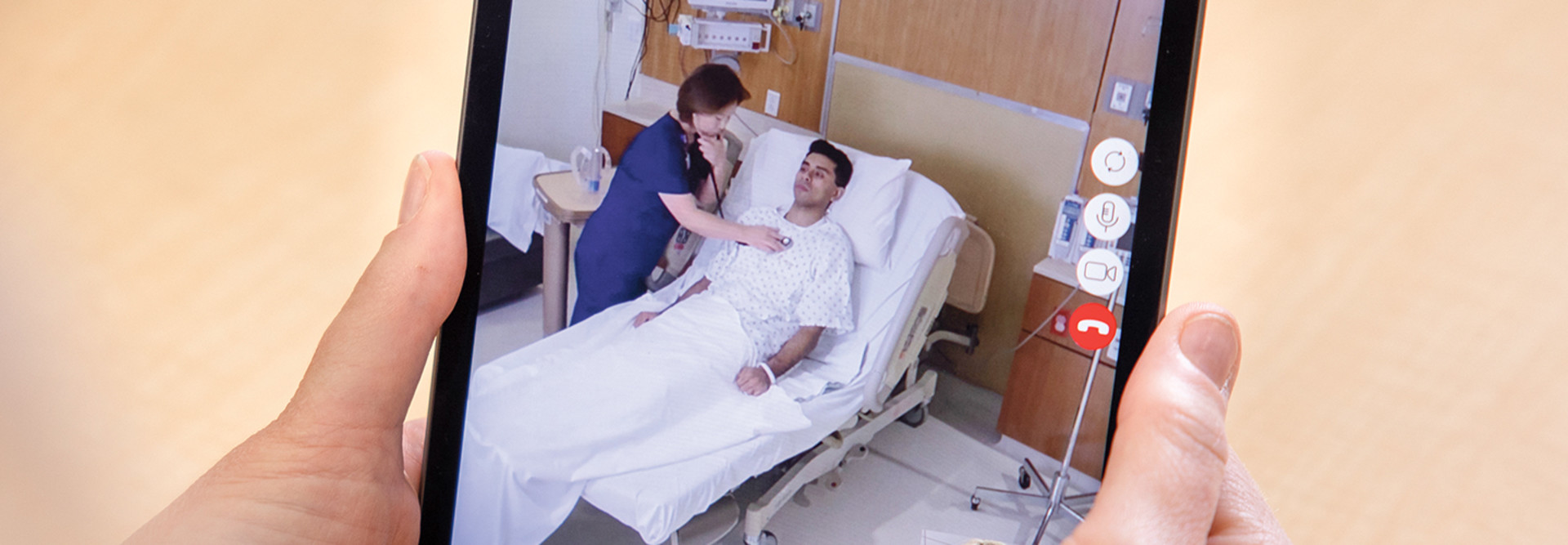Not only is the technology efficient, but it’s also highly precise.
“The camera lets you zoom in on anything you want,” Roxburgh says. “You can focus on a pupil, look at waveforms on the monitor, check the drip rate on a pump — and as you do, you can be talking with the patient, all without ever having to go in.”
The setup has reduced staff exposure to COVID-19, preserved personal protective equipment and saved time and expenses associated with carting cleaning equipment from room to room.
“Interestingly, the patients like it too,” Roxburgh says, noting that many have said they find the virtual visits to be more productive. “What the patient sees is a doctor without distractions. Because it’s just their face up there, the focus is on them and nothing else.”
Providers Must Adapt to Deliver for Their Patients
Before the pandemic, most providers saw little reason to use virtual technologies for inpatient visits. And while Roxburgh says he knew Banner Health’s telehealth solution “would be a winner” for obvious COVID-related reasons, he’s now visualizing its role in other functions.
“We can bring in outside specialists for visits or do guest visits with family members at home,” Roxburgh says. “My vision is that every hospital room should have this capability, and I think we’ll find it’s valuable even after the pandemic.”
MORE FROM HEALTHTECH: Healthcare trends to watch in 2021.
Others in the medical arena agree. “These systems are going to be beneficial to both nursing and support staff in responding to a patient’s needs,” says James Welch, president and chief strategy officer with ARC Biomedical Consultants in Bend, Ore. In-room telehealth advancements won’t eliminate the need for face-to-face care, he adds, “but they may increasingly supplement routine calls and more frequent check-ins.”
David Hinkle, executive director of business operations with Mercy Virtual, has long been a champion for in-house telehealth. The Chesterfield, Mo.-based organization has offered its own virtual care services for more than a decade.
It was the first health system in the country to open a dedicated virtual care center designed for intensive care doctors and other specialists to monitor patients across an extensive network of Mercy hospitals and clinics.
“Early in COVID, we quickly recognized how lucky we were to already have this infrastructure in place,” Hinkle says.
That infrastructure largely involves HIPAA-compliant telehealth systems, including Vidyo and other solutions. Hospital rooms feature wall-mounted units with adjustable monitors, pan-tilt-zoom cameras, and built-in speakers and microphones. The cameras have infrared capability so clinicians can check on patients at night.












